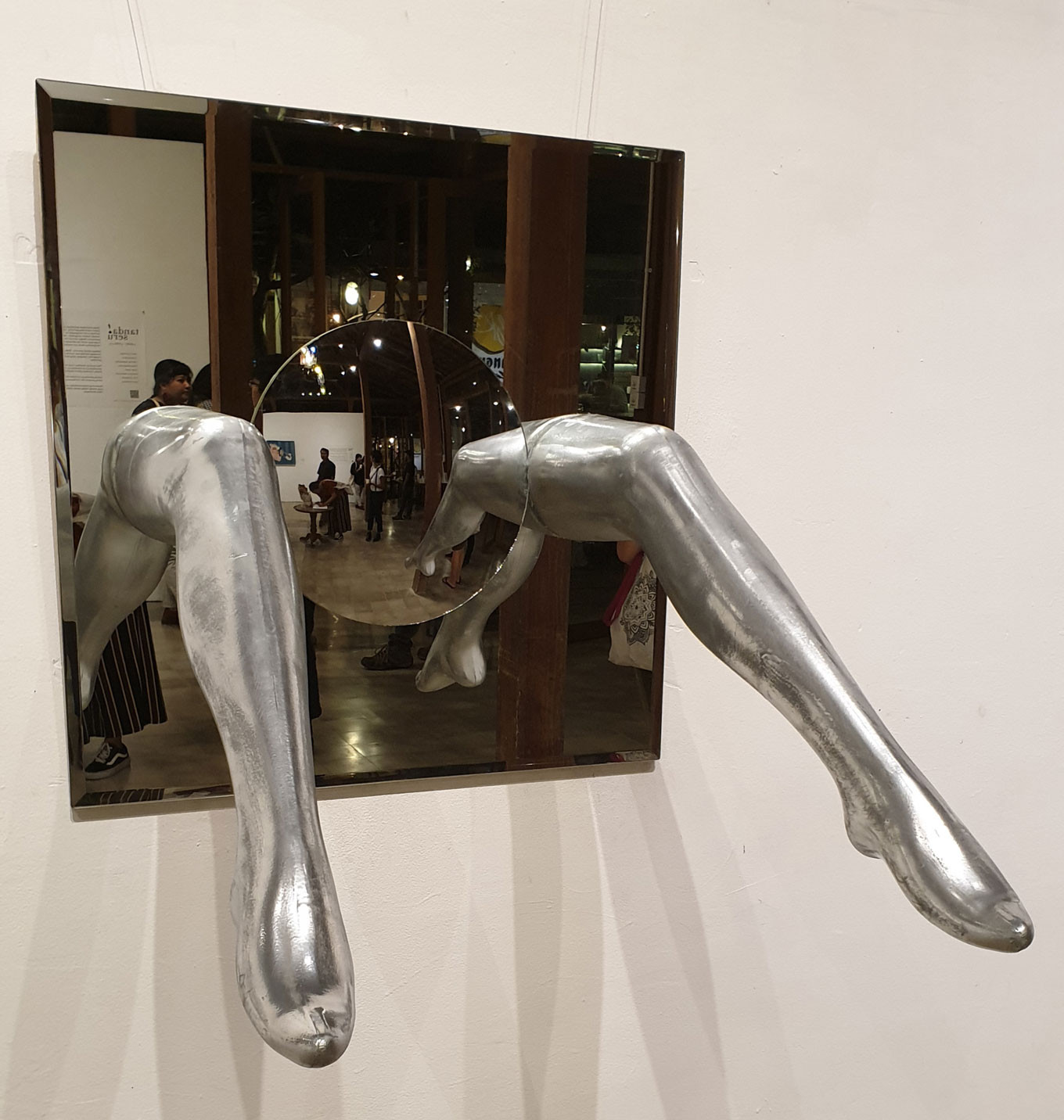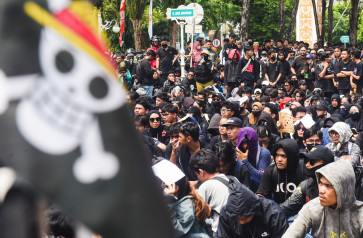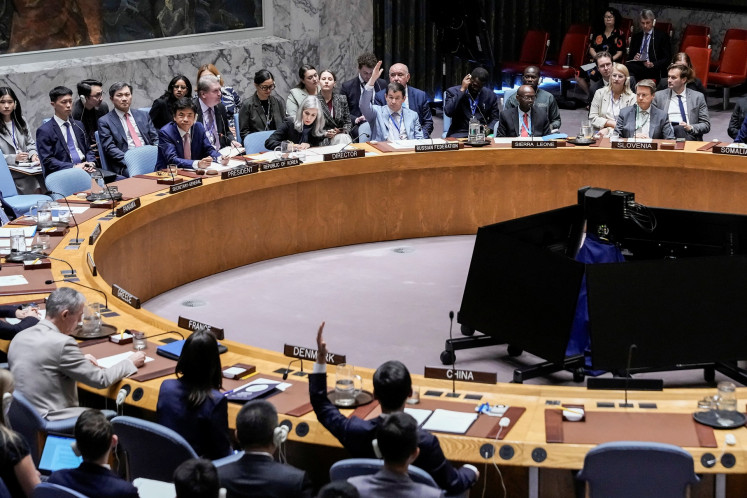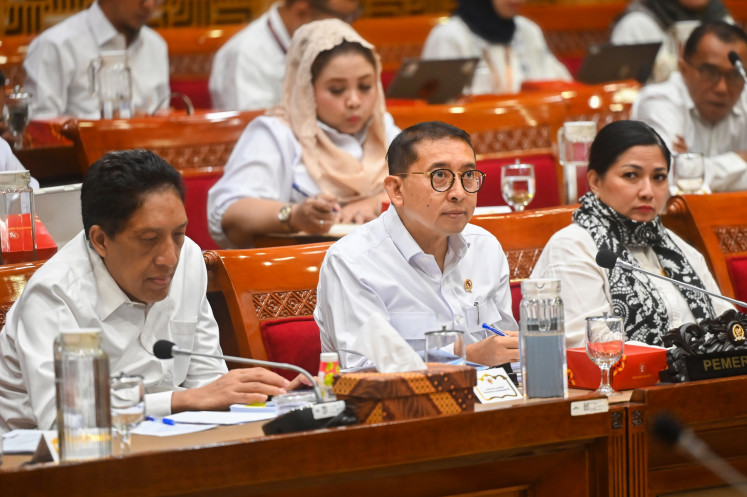Popular Reads
Top Results
Can't find what you're looking for?
View all search resultsPopular Reads
Top Results
Can't find what you're looking for?
View all search results'Tanda Seru!' exhibition in Bali makes bold artistic statement
“Through Tanda Seru! we examine and question issues related to gender, patriarchy and sexuality -- making statements about the female body, women’s roles, and our capabilities as equals with men."
Change text size
Gift Premium Articles
to Anyone
A
meeting of young Balinese women from various creative backgrounds, yet with similar visions, set out to create a cross-disciplinary platform to support and encourage women’s art activities and visual discourse in 2017. With motivating question like: “Why aren’t there many established women artists in Bali?” the gathering set the foundation for a new art collective called Futuwonder.
In July last year, Futuwonder announced its arrival on the Indonesian art scene by conducting a Wikilatih (Wikipedia article writing) workshop and uploading 18 new articles online on female artists from Bali.
Puan Empu Seni: Edit-a-thon was part of a national drive, held in conjunction with Wikimedia Indonesia, to increase the amount of data on Indonesian female artists available on the internet’s most go-to source of information: Wikipedia.
Following on from their first exhibition, Masa Subur: Efek Samping, held late last year in Ubud, Futuwonder presented the two-week Tanda Seru! (Exclamation Mark), which runs until April 13 at Uma Seminyak, Bali.
Officiated by Indonesia’s prominent woman contemporary artist, Arahmaiani, and showcasing diverse contemporary works by eight woman artists, the exhibition commemorated International Women’s Day on March 8 and Kartini Day on April 21. Also referred to as Women’s Emancipation Day and established in 1964 by Indonesia’s founding president, Sukarno, Kartini Day is a national holiday celebrating the life of Raden Ajeng Kartini (1879-1904), Indonesia’s first feminist activist.
“Bali is a very patriarchal society with few women being represented in the art scene, especially in museums and galleries,” said Ruth Onduko, one of the founding members of Futuwonder, along with emerging artist Citra Sasmita and graphic designer Ni Putu Sridiniari.
“We intentionally invited talented young women to exhibit in Tanda Seru! especially those who make art but do not label themselves as artists,” Ruth explains. “Due to the narrow scope of today’s contemporary art world women are marginalized and few get the opportunity to exhibit their work within the fine art gallery system as their work may not follow current market trends, or may lack the necessary commercial elements.”
“Through Tanda Seru! we examine and question issues related to gender, patriarchy and sexuality -- making statements about the female body, women’s roles, and our capabilities as equals with men,” Ruth said. “We chose the exhibition's title to emphasize the importance of these issues, while showing the art world, especially in Bali, that there is a lot of highly skilled female artists that are worthy to be considered as part of the larger art world.”
Dan Bunga Berkata (And the Flower Speaks) is inspired by Aria Gita Indira’s investigation into data released by Statistics Indonesia in 2017, which revealed that one in three Indonesian women aged between 15 to 64 have experienced violence and/or sexual violence in their lives.
Indira presents three small still life compositions of flower arrangements on black backgrounds, some of the flowers, however, are embroidered in cotton. The cotton patches are metaphors, symbolic icons for all female victims of domestic violence. Journalists often use the names of flowers when referring to domestic violence survivors in their reports.
The crude, yet confrontational pieces The World In Between Her Legs, 2019 and Are We There Yet by Santi Permana feature women’s underwear attached to brightly colored canvases. Statements to encourage strength and enthusiasm, such as “forced prostitution”, “sexual harassment”, “girls are strong” and “empowered women” complete the compositions. Questioning the patriarchal reconstruction of the body of a woman who is menstruating, worshiping, in the workplace, and in marriage, Happy to Bleed #1,2&3 by Cristine Mandasari presents circular compositions with restrictive statements written upon sanitary napkins. The artist poses the question: “With all the restrictions, can women actualize themselves as human beings who are free and equal to men?”
Communicating about the objectification of women, layers of transparent acrylic sheets frame a collage of digital images featuring mannequins, flowers and hands in the eye-catching Mannekin, 2019, by Intan Kirana Sari, who was born in Denpasar, Bali, in 1999. Delicate brightly colored pieces of paper are arranged into collage on a blue background in Male Reproductive System, 2019 by Irene Febry. She imagines what the human reproductive system might look like if it was found within the body of a man.
Citra Sasmita is renowned for her descriptive paintings depicting the exploration of the female body through the suffering and pain of the wounds inflicted upon them. Portrait of the Other, #1 & #2 contrasts and balances tragedy with an unusual sense of beauty, creating strong and distinct compositions. Few Balinese artists express themselves through the medium of printmaking, Sealing the Body and Tutur Tinular by Ni Luh Pangestu Widya Sari -- who was born in Denpasar, Bali, in 1991 -- are a departure in artistic techniques and aesthetics from the other works in the show, adding to the overall strength of Tanda Seru!
A pair of long silver legs protrudes from a square mirror, centrally positioned between the legs of another mirror, round and convex. Upon inspecting Res Publica: Security Mirrors for Genitalia, by Ni Putu Sridiniari, the observer immediately comes face-to-face with their own image. The highlight of Tanda Seru! the work is both engaging and confronting, provoking thoughts, experiences and reflections about gender identity.
“People are obsessed with private matters and sexuality. The law and the public, however, control women's freedoms and perpetuate gender inequality,” said Sridiniari, a freelance graphic designer, who rarely exhibits her work. “I believe contemporary art is important to negotiate politics and sociocultural issues -- discourses that highlight personal narratives and cultural identity in a larger context: the family, community and the state.
“I've always wanted to work with mirrors and body parts to create an installation, so I decided to work with legs for Res Publica, because everybody is curious about sexuality, especially in this case with the direct reference to female genitals,” she explained. “In Res Publica, female genitalia is a treasure, yet remains a hidden mystery, that is watched by the public eye.” (kes)
__________
Tanda Seru!
Date: Open March 31 to April 13
Place: Uma Seminyak, Jl. Kayi Cendana 1, Oberoi, Seminyak, Bali











